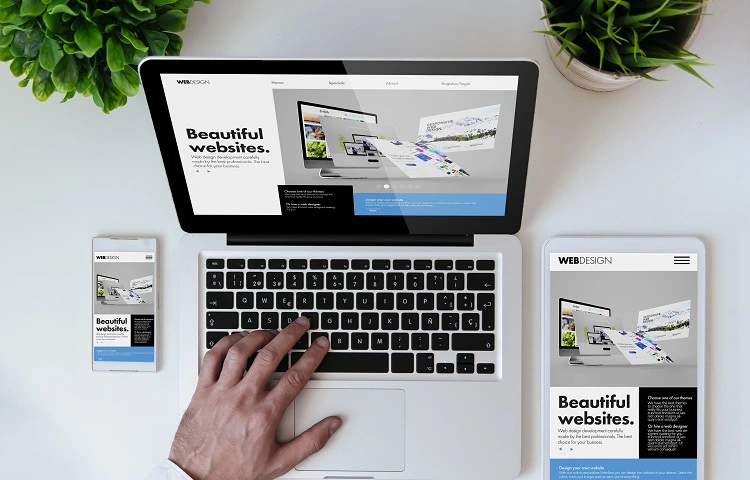
The Psychology of Landing Page Design: Persuading and Engaging Visitors
When it comes to designing landing pages, it’s not just about aesthetics and layout; understanding the psychology behind user behavior is crucial. By leveraging psychological principles, you can create landing pages that effectively persuade and engage visitors, driving conversions and achieving your business goals. In this blog, we will delve into the psychology of landing page design and explore key strategies to captivate and convert your website visitors.
Create a Strong First Impression
First impressions matter, and they can significantly impact a visitor’s perception of your brand and offering. Make sure your landing page design immediately captures attention and communicates value. Use visually appealing elements, compelling headlines, and persuasive copy to convey the benefits of your product or service. Pay attention to color psychology, as different colors can evoke specific emotions and influence user behavior. A visually striking and well-crafted landing page will encourage visitors to explore further.
Utilize Focused Attention and Visual Hierarchy
Design your landing page to guide visitors’ attention to the most important elements. Utilize visual hierarchy techniques such as size, color contrast, and placement to emphasize key messages, calls to action, and forms. Visitors should be able to quickly and intuitively understand the purpose of the page and know where to focus their attention. By controlling the visual flow, you can effectively direct visitors towards the desired action.
Leverage Social Proof and Trust Signals
Incorporating social proof and trust signals on your landing page is a powerful persuasion technique. Display customer testimonials, reviews, ratings, and case studies to build credibility and trust. People are more likely to take action when they see others endorsing your product or service. Additionally, include trust symbols such as security badges, partner logos, or certifications to alleviate any concerns visitors may have regarding data security or legitimacy.
Apply the Principle of Scarcity and Urgency
The scarcity principle taps into the fear of missing out (FOMO) and can be a potent motivator for conversions. Highlight limited-time offers, exclusive deals, or limited stock availability to create a sense of urgency. Incorporate countdown timers, progress bars, or limited quantity notifications to encourage immediate action. By emphasizing scarcity and urgency, you can drive visitors to make a decision before they lose out on the opportunity.
Optimize for Cognitive Ease and Readability
Visitors should be able to consume the content on your landing page with ease. Use clear and concise language, avoid jargon, and break up text into scannable sections with subheadings and bullet points. Ensure that your font type, size, and color provide optimal readability. Cognitive fluency, or the ease with which information is processed, enhances the perception of trustworthiness and positively impacts the user experience.
Implement Clear and Compelling Calls to Action
A well-designed call to action (CTA) is crucial for conversion. Make your CTAs stand out by using contrasting colors, large buttons, and compelling copy. Use action-oriented language that conveys a sense of urgency or value. Test different variations of CTAs to determine what resonates best with your target audience. Additionally, consider using multiple CTAs strategically throughout the page to increase the chances of conversion.
Employ the Power of Visuals and Imagery
Visuals have a profound impact on emotions and decision-making. Incorporate high-quality images, videos, or infographics that align with your brand and resonate with your target audience. Use visuals to evoke positive emotions, highlight product features, or demonstrate the benefits of your offering. Videos, in particular, can be highly engaging and effective in conveying complex information or showcasing your product in action.
Implement Persuasive Copywriting Techniques
Compelling copy is essential for persuading visitors to take action on your landing page. Use persuasive copywriting techniques to create a sense of desire and urgency. Clearly articulate the benefits and value proposition of your product or service. Use persuasive language, such as strong verbs, emotional appeals, and storytelling, to connect with your audience on a deeper level. Address potential objections and offer compelling reasons why visitors should choose your offering. Tailor your copy to resonate with your target audience, focusing on their needs, desires, and pain points.
Incorporate Behavioral Triggers and Personalization
Understanding human behavior can help you design landing pages that resonate with visitors on a personal level. Incorporate behavioral triggers, such as reciprocity, social influence, or commitment and consistency, to influence decision-making. For example, offer a free resource in exchange for an email address to activate the reciprocity principle. Personalize the landing page content based on visitor data or past interactions to create a tailored experience that feels relevant and engaging.
Test, Measure, and Iterate
Designing a persuasive landing page is an iterative process. Continuously test different elements, such as headlines, visuals, CTAs, or form lengths, to determine what resonates best with your audience. Use A/B testing or multivariate testing to gather data and insights. Analyze user behavior and conversion metrics to identify areas for improvement. By regularly testing and optimizing your landing page, you can refine your design based on real data and drive better results over time.
Designing a landing page that persuades and engages visitors requires a deep understanding of human psychology. By applying principles such as creating strong first impressions, utilizing visual hierarchy, leveraging social proof, scarcity, and urgency, optimizing for cognitive ease, employing persuasive copywriting techniques, incorporating visuals, and personalization, and using behavioral triggers, you can create landing pages that captivate and convert. Remember to test and iterate on your designs based on data-driven insights to continually improve your landing page’s effectiveness. With a strategic and psychologically informed approach, you can create landing pages that drive meaningful results for your business.
